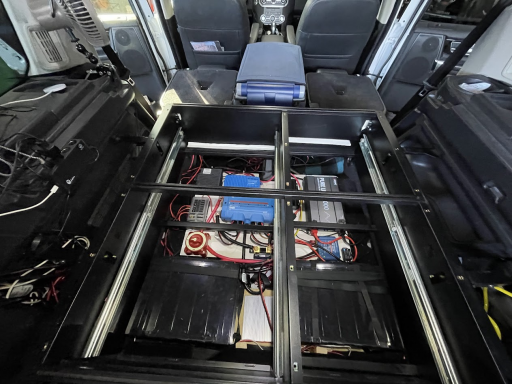I'm in brainstorming mode and looking at possibly getting 2 different lithium generators. I'm liking Ecoflow but will cross shop Bluetti as well.
Rig- Jeep with an ARB50 qt fridge. It's left me stranded before killing the battery even with the cut off. I want to put a lithium generator and power the fridge off of it. Then run either a DC-DC or some high power current to charge the pack while driving. Not sure of the size I need. From reading the internet, the fridge pulls anywhere from 30-60 watts, but it's not continuous. I drive everyday while on a trip, but I'd like to have 2-3 days capacity just in case.
In the little camper trailer I'm planning- it'll have a 5000BTU air conditioner (410 watt/hr), lights, charge phones, iPad, maybe run a fan, electric blanket if its cold. So I'm thinking something large like an EcoFlow Delta 2. That will let me run the A/C to chill down enough to get to sleep, then turn it off. Or stay warm at night. I plan to run solar on the roof and also run a DC-DC charger from the Jeep back to the trailer just to top off the lithium.
Any thought on this type of set up?
Rig- Jeep with an ARB50 qt fridge. It's left me stranded before killing the battery even with the cut off. I want to put a lithium generator and power the fridge off of it. Then run either a DC-DC or some high power current to charge the pack while driving. Not sure of the size I need. From reading the internet, the fridge pulls anywhere from 30-60 watts, but it's not continuous. I drive everyday while on a trip, but I'd like to have 2-3 days capacity just in case.
In the little camper trailer I'm planning- it'll have a 5000BTU air conditioner (410 watt/hr), lights, charge phones, iPad, maybe run a fan, electric blanket if its cold. So I'm thinking something large like an EcoFlow Delta 2. That will let me run the A/C to chill down enough to get to sleep, then turn it off. Or stay warm at night. I plan to run solar on the roof and also run a DC-DC charger from the Jeep back to the trailer just to top off the lithium.
Any thought on this type of set up?








